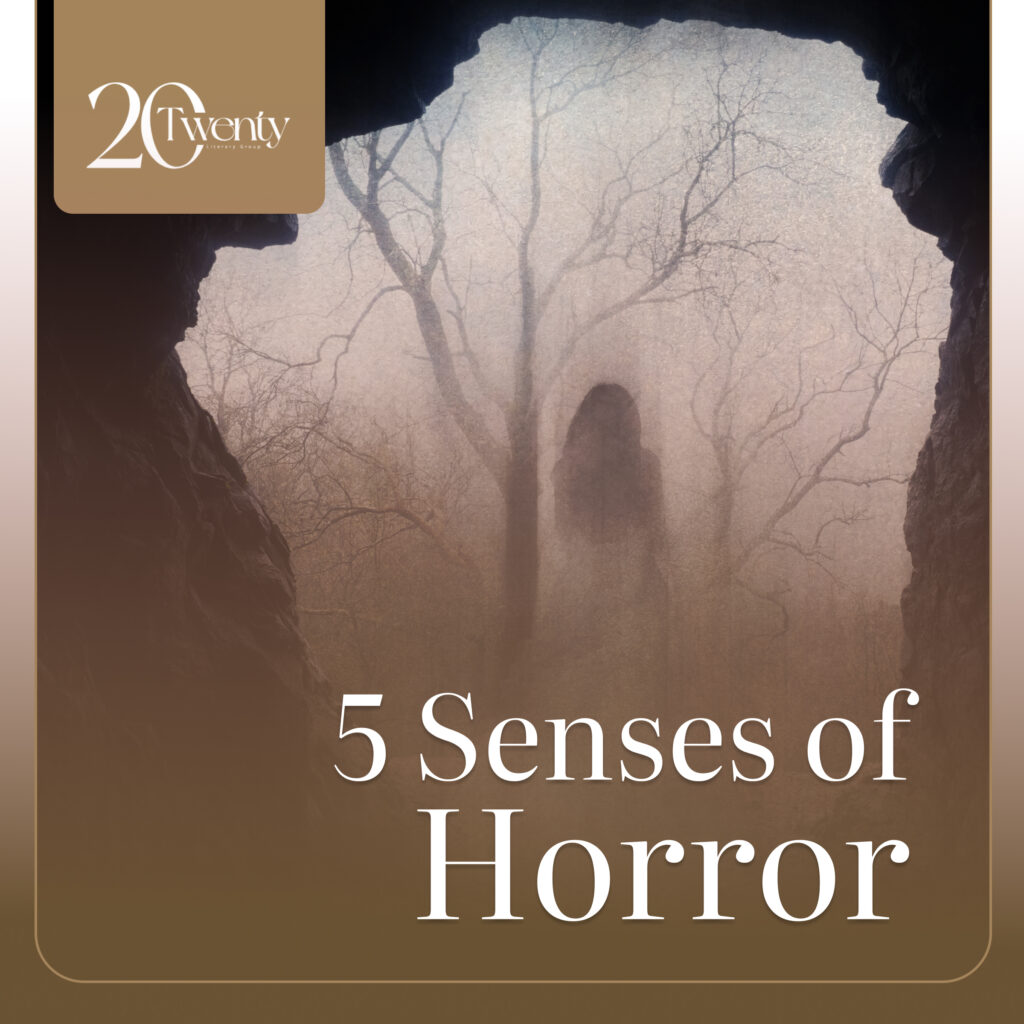The five senses of a human are sight, smell, sound, taste, touch. It might be confusing for some on how it relates to horror. Still, it significantly impacts the horror stories of movies we read and watch.
SIGHT
Many beginnings writers struggle with creating vivid scenarios in their work and resort to overused clichés. An unforgettable impression can be made on the mind of the reader with just one striking image. It is essential to give equal weight to the photos.
The eyes are the direct link between us and the characters on screen, so it’s just as important to have a solid visual design as it is to have a good sound design. Perhaps we can see aspects of ourselves in them, either in their physical appearance or in the way they conduct themselves. On the other hand, maybe we can put ourselves in their shoes and understand the world as they do. Sight is the most unsettling sense because it lets us see the horrible things on the screen and feel them for ourselves.
SOUND
It’s more likely that someone who is scared will react exaggeratedly to loudness shifts than someone who is feeling relaxed would. A character’s voice or even breathing can serve as a subtle audio indication. As the main character tries to figure out where a mysterious noise is coming from, tension is likely to rise.
Filmmakers rely on the audience’s aural sense more than any other sense when creating a scary film. It’s common knowledge that movies with jump scares are notorious for making their audiences feel safe, only to pounce on them with a horrific creature out of nowhere.
Even terrifying images may fail to scare the audience if they are accompanied by music that isn’t up to snuff. It takes a unique kind of horror film to show us how readily our own voices and music can frighten us.
TASTE
The sense of taste is often overlooked by authors. If you’re at a loss for what to write about, one piece of advice is to describe the person’s mouth. Perhaps he suffers from a metallic aftertaste, chronic coffee breath, or acid reflux.
It’s hard to play on the sense of taste. A small number of films, however, rely on our sense of taste and our aversion to unpleasant flavors to induce a visceral reaction of fear in their viewers.
The style of writing is unusual. It relies on the other senses in fiction just as much as it does in reality. It’s all well and good to talk about how something tastes, but words like “salty” and “sweet” lose their impact without the accompanying images. The horror genre lets something scary be introduced in a shocking way, and then the reader can keep taking it in.
SMELL
Like the sense of taste, the importance of smell is challenging to portray on the big screen. The smell is the sense most closely linked to memory, but it is also the most difficult to express. You’re free to try describing the aroma of a distant planet if you choose, but the smell is most reliable in everyday settings.
Including olfactory descriptions in our writing helps to immerse the reader in the scene. Use aroma, stench, whiff, stink, scent, hint, malodor, and so on from your thesaurus.
TOUCH
There is no separation between the twin genres of horror and suspense. When creating a horror story, it’s essential to make the reader feel what it’s like to lose a limb or other bodily part. While the thought of losing a finger is undoubtedly unpleasant, knowing that it isn’t yours lessens the blow.
Is there anything that, when touched, gives you a tingling sensation? When someone stands too close to you on a bus or train and ruffles your hair with their breath but isn’t breaking any rules, you feel physically threatened. It’s not limited to describing pain and suffering. The feeling is not something you can ignore, rationalize away, or escape.
The stimulation of these senses is what makes reading horror stories or watching scary movies so thrilling. Since horror movies are so good at making you feel like you’re in real danger, they make people feel the same way they do when they’re in real trouble.

